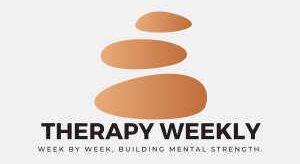Cognitive Behavioral Therapy (CBT) stands as a cornerstone in the treatment of depression, offering individuals tangible tools to address negative thought patterns and behavioural tendencies. For those navigating the labyrinth of depression, CBT provides a guiding light towards a brighter mental landscape. In this article, we’ll delve into practical strategies within the realm of CBT, specifically tailored to combat depression. Whether you’re considering therapy or already engaged in CBT sessions, these insights can serve as invaluable companions on your journey towards healing.
Understanding CBT
CBT operates on the principle that our thoughts, feelings, and behaviours are interconnected. By identifying and challenging negative thought patterns, individuals can disrupt the cycle of depression and cultivate more adaptive coping mechanisms. Unlike traditional talk therapy, CBT is highly structured, focusing on specific goals and practical strategies to effect tangible change.
Identifying Negative Thought Patterns
Central to CBT for depression is the recognition and interrogation of negative thought patterns, often referred to as cognitive distortions. These distortions can manifest in various forms, including black-and-white thinking, catastrophizing, and personalization. Through self-awareness and reflection, individuals can begin to identify these distortions as they arise, laying the groundwork for cognitive restructuring.
Challenge and Reframe
Once identified, challenging and reframing negative thoughts is key to breaking free from their grip. This involves questioning the validity of these thoughts and exploring alternative, more balanced perspectives. For example, if the thought “I’m a failure” arises, one might challenge it by asking for evidence to support or refute it, and consider alternative explanations for the situation.
Behavioural Activation
Depression often robs individuals of motivation and pleasure, leading to withdrawal and isolation. Behavioural activation, a core component of CBT, aims to counteract this by scheduling enjoyable and meaningful activities, even when motivation is lacking. Start small, setting achievable goals, and gradually increase the level of activity over time.
Graded Exposure
Avoidance behaviours can exacerbate depression by reinforcing feelings of fear and anxiety. Graded exposure involves gradually confronting feared situations or activities, breaking them down into manageable steps. By systematically facing fears, individuals can build confidence and resilience, ultimately reducing the power of anxiety-provoking stimuli.
Mindfulness and Acceptance
CBT incorporates elements of mindfulness and acceptance-based techniques to help individuals cultivate present-moment awareness and non-judgmental acceptance of their experiences. Mindfulness practices such as deep breathing, body scans, and meditation can provide a reprieve from rumination and foster a greater sense of inner peace.
Utilising Resources
In addition to therapy sessions, there are numerous resources available to support individuals on their CBT journey. Self-help books, online courses, and mobile apps offer supplementary tools and exercises to reinforce learning and practice outside of sessions. Discuss these options with your therapist to determine which resources align best with your needs and preferences.
Building a Support Network
Recovery from depression is seldom a solitary endeavour. Cultivating a strong support network of friends, family, and mental health professionals can provide invaluable encouragement and perspective along the way. Don’t hesitate to lean on your support system when needed and communicate openly about your struggles and triumphs.
Monitoring Progress
Tracking progress is essential for gauging the effectiveness of CBT interventions and identifying areas for further growth. Keep a journal documenting your thoughts, feelings, and behavioural patterns, noting any changes or insights that arise. Reviewing this record periodically can offer valuable feedback and motivation to stay the course.
Seeking Professional Guidance
While self-help strategies can be beneficial, it’s important to recognise when professional intervention is necessary. If depression persists despite your best efforts, or if you’re experiencing thoughts of self-harm or suicide, don’t hesitate to reach out for help. A qualified therapist or psychiatrist can offer tailored support and potentially recommend alternative treatment approaches.
Conclusion
In the labyrinth of depression, CBT serves as a guiding thread, illuminating the path towards healing and resilience. By understanding and implementing the principles of CBT, individuals can reclaim agency over their mental well-being and forge a brighter future. Remember, progress may be gradual, but every step forward is a testament to your strength and determination.
References
[1] National Institute for Health and Care Excellence. (2009). Depression in adults: recognition and management. Retrieved from https://www.nice.org.uk/guidance/cg90
[2] Beck Institute for Cognitive Behavior Therapy. (n.d.). What is CBT? Retrieved from https://beckinstitute.org/get-informed/what-is-cognitive-therapy/
[3] American Psychological Association. (2017). Cognitive Behavioral Therapy. Retrieved from https://www.apa.org/ptsd-guideline/patients-and-families/cognitive-behavioral


